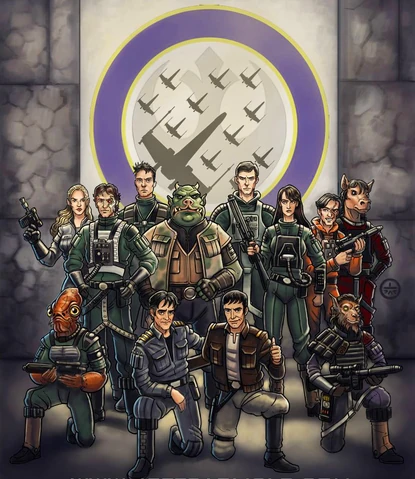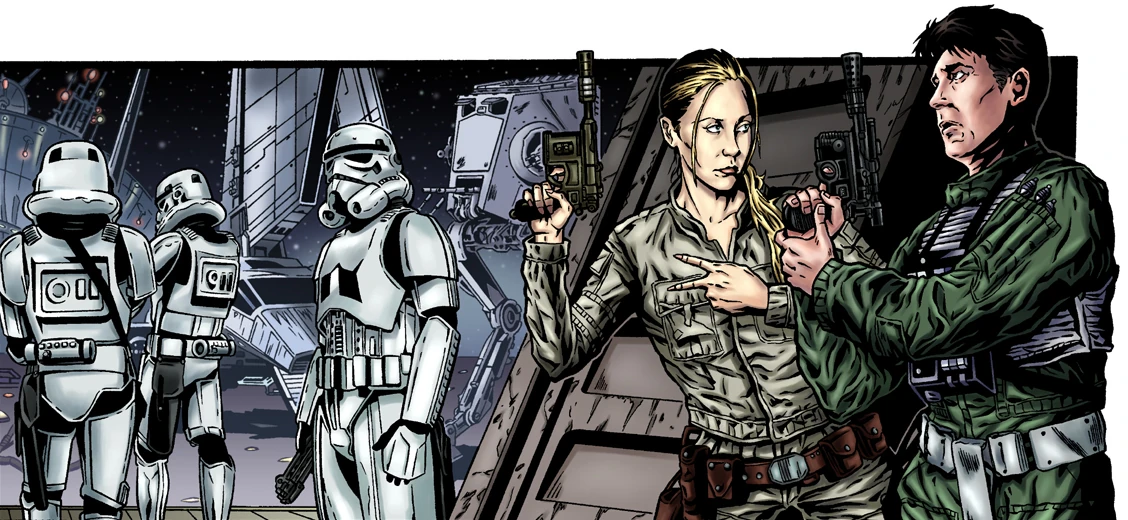So. Stuff is
awful in the real world. Hell, between the time I started this blog post and the time I'm writing this sentence, things have gotten worse.
I urge folks reading this to consider donating to
RAICES or the
International Refugee Assistance Project.
*******
Aaron Allston (RIP) had a
long-running and stellar RPG resume, but I think his most highly regarded work may be the Champions supplement Strike Force. Strike Force was a sourcebook detailing in-depth Allston's home Champions campaign, tips and tricks for GMing a long-running campaign, analysis of how the campaign developed, etc.
Jeff took a look at it a while back; it's a great "how-to" for constructing your own supers campaign in the same mode. Allston's example provides guidance for the issues that will likely come up in a supers campaign, and gives the prospective GM a framework and set of tools for being able to deal with them.
I was taking a bus to NYC recently on little sleep, and needed something to keep me awake and upright. So I started flipping through and rereading one of the Wraith Squadron books - Allston's first entries into writing Star Wars fiction. They focus on a ragtag bunch of near-washouts with nevertheless exceptional skills, multiclass commando/pilots tasked with special operations for the New Republic.
The three initial Wraith Squadron books center on the squadron's operations against Warlord Zsinj, an ex-Imperial warlord with a Super Star Destroyer who's managed to carve out his own personal empire (lowercase 'e' there). The Wraiths wind up staging multiple false-flag and covert operations, masquerading first as Zsinj's own forces, then as independent mercenaries...
As I was blearily paging through, I had a sudden realization born of equal parts brilliance and sleep deprivation.
The Wraith Squadron books (and to a lesser degree, their Rogue Squadron predecessors) serve as a great how-to for setting up an insurgency-focused RPG campaign. I don't just mean that they're crackingly fun novels about an insurgency-style conflict (although they are that), or even that they feel akin to the vibe given by the best parts of the WEG Star Wars RPG (although they are that too). The Wraith Squadron books give you a sample set of characters (and showcase their evolution over time), raise a clear set of problems that insurgent cells might face, and provide examples of how to structure a campaign framework that meaningfully combines strategic decisions with engaging roleplay-friendly tactical frameworks (the traditional "adventure session").
The Wraiths do seem like a traditional PC selection - one part Central Casting (Star Wars), one part goofy off-the-wall character concepts ("A Gamorrean mathematical savant!" "Imperial double agent with artificially induced dissociative identity disorder!"). But the most interesting thing for RPG purposes is the framework that Allston places the Wraiths in.
There's a bit of throat-clearing in the first Wraith book (character introductions, training montages) but it gets going with a interesting problem that the PCs have to wrestle with: most of their X-wings are disabled in space, and they're pretty sure that a hostile ship is inbound to their location to scoop up the disabled craft. How do you deal with this?
In short order this turns into a new problem/opportunity - 1) you've captured the hostile ship that was coming for your squadron, and 2) the enemy doesn't know that you've taken it.
What do you do? How do you turn this into your advantage, in an open-ended setting with no immediate mission orders beyond "deny the enemy"? (Oh, and 'how do you modify the ship to be cooler,' in swift accordance with the gear fascination that regularly crops up in RPGs.)
As I've written before,
special operations make for a compelling campaign framework. The Wraiths continually have to deal with resource shortfalls - both personnel (as casualties mount) and starfighters (generally their most effective, but also most irreplaceable, equipment asset). Missions are designed, on both sides, with the objective of gathering factual intelligence, but also an understanding of the motivations and personality dynamics behind the opposition.
 |
Wraith Squadron, by Jeffrey Carlisle
(WotC, Galaxy at War) |
The additional component that the Wraith Squadron books bring is a discussion of sources of power, legitimacy, and the dynamics of control - the
heart of an insurgency discussion. Directly duelling Zsinj is repeatedly shown to be a mug's game - he refuses to give direct battle with his fleet unless he has a clear numerical advantage, and only fights on ground that he has chosen (something most explored in the third Wraith book, Solo Command). Here, Zsinj is in the position of the insurgent against the incumbent New Republic. The NR forces wind up gaming out a few possibilities - how is he maintaining support? What are the crucial components of his empire's infrastructure, and the sources of his legitimacy?
Insurgencies are about convincing a population that you are going to be a better source of government than your opposition (however that population ranks 'government'). This is the fundamental objective of an insurgency-centric RPG campaign as well (regardless of which side one's on, insurgent or incumbent) - degrading your opposition's capability to govern and exert force, while demonstrating to the populace that you're able to do better on those fronts.
Chris has written before about the incorporation of a
Chaos Index into a campaign to present a campaign framework that reacts to player actions. (If curious to see a worked example of a chaos index, check out
Misty Isles of the Eld; all of the Hill Cantons products from Hydra have Chaos Indices but Misty Isles is the most directly helpful for today's discussion). As Chris alludes to in his blogpost, the Chaos Index framework has origins in the political track that some wargames incorporate to determine the allegiance of a population. So here, we're bringing the Index back to its roots.
 |
Wraith Squadron, by Joe Corroney
(WotC, Star Wars Gamer #9) |
If players are taking on the role of an insurgent cell, then it makes sense for the GM to track two variables in particular: the "
Heat" that player actions have generated, and the population's
inclinations towards one side or the other. (More ambitious GMs might wish to track the population's affiliation towards each side on its own separate track, in order to model disillusioned populaces who can trust neither belligerent, or populaces seeking alternative governance when one side is insufficiently responsive.) As players continue to take action, Heat will continue to rise, and the incumbent will devote more and more resources to countering their actions and reasserting control over the areas that the players are striking at. Notably, Heat will rise with both successful and failed operations - but if the players lie low for too long, the ability to win over the population will begin to diminish.
On the other hand, if the players are the incumbent, then the inclinations track might be paired with a
Public Will or
Official Support track; as fighting and conflict continues on, the incumbent's capacity to exert sustained influence begins to wane. So the incumbent has a strong desire to bring things to a head quickly...but the quick way is often the way that decreases legitimacy, and therefore decreases inclination.
Either way, dealing with an insurgency conflict is a fundamentally
political issue, since it hinges so strongly upon gaining the support of the population (or at the very least, preventing their active opposition). It requires interaction and bargaining with with multiple factions, and mandates interaction with various stripes of leaders. This isn't 'just' a wargame, but a framework that combines strategic and tactical objectives with a deeply personal framework that makes it suitable for RPGs.
Have any of you dabbled with insurgencies in your games? What would you want to ensure is present?
One final note - as with any campaign framework dealing with war and conflict, an insurgency-centric campaign can go dark places. However, given the very real-world insurgency conflicts that we've seen over the past two decades, those dark places may touch too close to home for folks. Getting player buy-in (and evaluating the areas folks are comfortable delving into) is going to be
crucial here.
Further Reading:
X-Wing Series, Michael Stackpole and Aaron Allston (particularly Stackpole's Wedge's Gamble, Krytos Trap, and Bacta War, and Allston's Wraith Squadron, Iron Fist, and Solo Command)
Counterinsurgency and the Rule of Law (yup, I'm vain enough to cite my own work here)
Wargaming in the Classroom: An Odyssey, James Lacey, War on the Rocks
GMT's
Counterinsurgency Games



